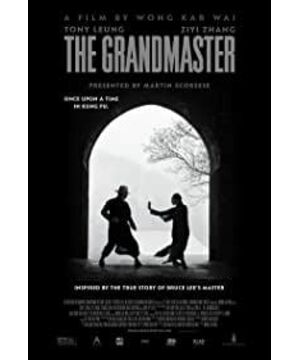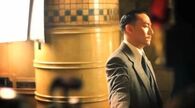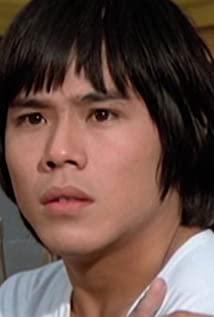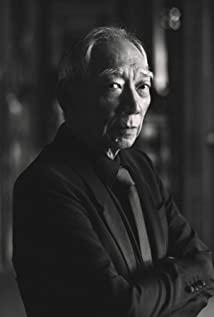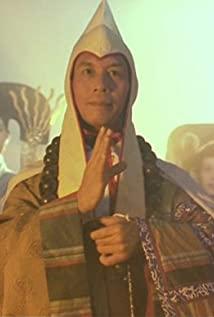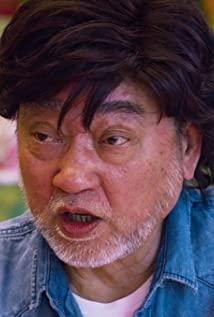[Expectation before watching the movie]
The difference between an "ice cream-style movie" and a "wine-style movie" is that the ice cream is delicious and sweet, and you forget it after eating it. The more you drink the red wine, the warmer you will be.
"The Grand Master" belongs to the treasures of the latter. For ordinary audiences who are used to watching genre films, "The Grand Master" is difficult to enter at the story level. When the audience is watching this film, they may not get that hearty feeling, on the contrary, they will get a feeling of intoxication. At the end, it is even more memorable.
What attracts the audience to the film is not the "heart" after the dramatic contradictions are resolved; it is "lighting", so they can realize the "sparseness" (die Lichtung) of life.
[Gone Wulin]
Xu Haofeng's "Gone Wulin" can be used as a "pre-view manual" for this movie. The anecdotes of the characters, martial arts rules, Kung Fu mentality, etc. told in "Gone Wulin" are the basis for unraveling the meaning of this film.
"The Grandmaster of a Generation" shows a passing martial arts in the Republic of China from the perspective of "gazing". The film presents the past through a misty foreground (please pay attention to the compositional characteristics of the film), and sections of the story are obtained through "telling".
The narrative structure of the film is "channel" type, all the shots "go inward", the golden building, the courtyard, the railway station, the Wuguan Street; not the heaven, the earth, the sun and the moon; therefore, the emotions are not the mighty mountains and rivers, the kind of opening and closing. ; instead, it pours out little by little, and then sinks little by little. The film speaks of a lost worldview. There is no heaven and earth, because heaven and earth are seen in the heart of man.
["There is a face"] The
lines in the film were written by Wong Kar-wai, Xu Haofeng and Zou Jingzhi together, and many of the lines have pun meanings, which can be said to be "there is a face". Wulin people act with martial arts as their way, and so do their speeches. Therefore, the lines in the movie must be combined with the action of the screen in order to "intertextualize". If you want to understand the basic meaning of the lines, you need to pay attention to watching everyone's gains and losses in the action scenes, and then you can get a glimpse.
For example, the scene in which Mr. Gong Lao admonished his apprentice Ma San. Gong Lao taught the pass of "Lao Ape Hanging Seal" as "returning back". The old martial arts master disciples must have a unique trick. Therefore, Ma San misunderstood the meaning of the master, and even defeated Gong Er.
But "there is a face" is a kind of behavior wisdom. Gong Er asked Ye Wen for a test, Gong Lao did not allow women to seek revenge, and the ghost of Guandong (Zhao Benshan) did not show his sixty-four hands, all of which were "there is a face."
[How is the round cake broken? 】
Mr. Gong Lao fought against Ye Wen, not fighting against the text, but having a round cake debate. Baguazhang emphasizes chain and change (there are eight, eight, sixty-four hands), while Wing Chun is light and quick. If you break the round cake Wing Chun, there is no chance of winning, but the round cake is broken by Ip Man (how to do it?), because Ip Man wins the seer.
What Gong Lao sees is the harmony between the north and the south, the nation; what Ye Wen sees is the world of heaven and earth. Ip Man's point of view was realized in later generations. In the group photo at the end of the movie, the little apprentice (Bruce Bruce) that Ip Man narrated opened up an era.
Ye Wen has a lamp and a mountain in his heart. The palace is both his lamp and his mountain. But with the words "seeing yourself, seeing heaven and earth, and seeing sentient beings", the masters are still on their way.
["Kung Fu is Time"]
Wong Kar-wai has a turn in "The Grand Master": it is to push time to a more subtle point. If in the previous films, "time" was the theme, then in "The Grandmaster", time became "Kung Fu" (that is, Effort, also KungFu).
The structure of the film follows the path of "2046", and the narrative time is fragmented. Flashback is used occasionally. Gong Er takes revenge on New Year's Eve, and ten years before and after are like an instant. It is reminiscent of "2046", where all the meeting and parting happened on Christmas Eve. It's a sense of time ritual.
The classic presentation of time, Gong Er and Masan duel at the train station is an example. How to show instant action on the screen? Wong Kar-wai told everyone: High-speed photography is outdated. The train that was dispatched was a stroke of genius. The train started, but it didn't leave. It's too late to say, it's too soon, the concept of time is brought into full play.
Gong Er sacrificed his life for revenge. Unlike Masan, she has been "turning around", but lacks a "turning around".
【redundant words】
For the first time, I watched the giant screen in the morning show on January 8. Although the screen is a giant screen, the film version is not the IMAX version, but the 2K general version is enlarged. The clarity is not enough, which greatly affects the perception. Therefore, I regret the art lighting and expectations of the film.
At the same time, there are still many places where the director copied himself in the movement of the film. Ye Wen helped his wife pinches her legs, apparently using the 663 technique in "Chongqing Forest". The pictures of Ye Wen and Gong Er walking on a street in the martial arts hall, and immediately traveled to "In the Mood for Love", as well as Gong Er talking to the wall, Ye Wen wearing a suit, etc. These pictures are like punctuation marks in the movie exist.
All the actors did a great job! Including supporting roles. Jin Shijie, Lu Haipeng, and even Xiaoshenyang.
Wong Kar-wai once said that he tried to use 3D before the filming of "The Grandmaster", but gave up. I think for this film, maybe the 48fps technology is more worth trying.
(January 8)
View more about The Grandmaster reviews


